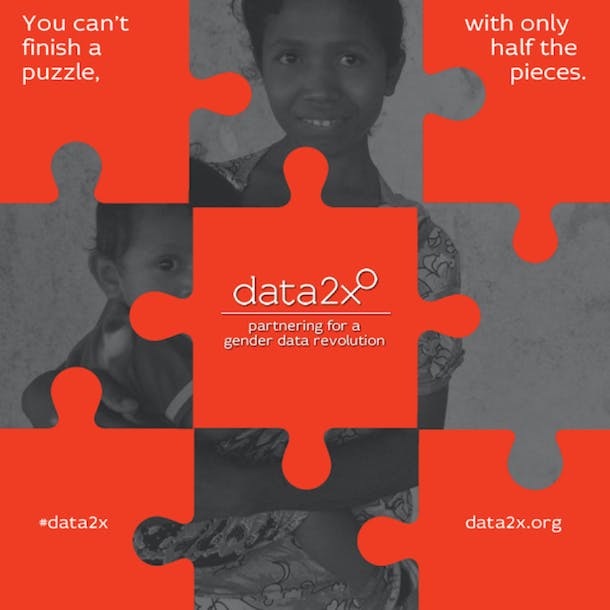
At an event for Data2X a few months ago, our partner Pali Lehohla, Statistician-General of South Africa, wisely said, “If you think information is expensive, try ignorance.”
It’s true: How can we fix a problem if we can’t identify or understand it? Without solid data as a foundation, we can’t create smart policies and guide impactful and cost-effective investments for global development.
As the world turns its attention to the post-2015 development goals, it’s critical to prioritize data, and in particular, to get serious about collecting more and better gender data.
Without accurate and adequate data about the lives of girls and women, we cannot wisely plan programs and policies, nor can we track progress toward gender equality. Without gender equality, sustainable development is impossible. Addressing gender data gaps is the mission of Data2X.
Five months ago, I gave birth to my daughter, Marlo. Along with the gratitude I felt for the clean, well-staffed health care facility, I was struck by the significance of one piece of paper: a Department of Vital Statistics form, asking for Marlo’s brand-new data, along with clear instructions on how to get her birth certificate. What I know from our work is that collecting and recording a baby’s birth should not be taken for granted.
For far too many girls around the world, something as simple as not having a birth certificate can have serious consequences that reverberate throughout their lives. In fact, more than one-third of all children under age 5 – 290 million – do not have a birth certificate. Without this, a girl cannot obtain a legal identity, and her age is not recorded.
This can prevent her from going to school, getting a job, taking action on an early marriage, and accessing the health and social services she needs. Birth registration information provides crucial data for countries to plan services like schools and health clinics.
Data2X is working with partners in Africa and Asia to strengthen Civil Registration and Vital Statistics (CRVS), which refers to the recording of births, deaths, causes of death, marriages, and divorces.
But CRVS is just one example of a critical gender data gap. We identified a total of 28 data gaps in 5 areas: health, education, economic opportunity, political participation, and human security.
Like CRVS, all of those gender data gaps have real consequences for the lives of girls and women. Data2X is working to address those gaps through building partnerships with data producers and users, and by exploring how big data can help us fill gender data gaps. We’ve made exciting progress on our partnerships, but there’s still much work to be done.
Marlo will be 15 in 2030, and I want her to grow up in a world where the possibilities are limitless for girls. In 2030, I want mothers in other countries to see birth registration forms as routine and as part of the experience of being a mother and a citizen of a country. I want their girls, their boys, and their own lives to be counted and considered in how their countries plan and progress.
It’s simple: We can’t achieve the world we want without good data to guide and inform our work. Join us in starting the gender data revolution.



 View All Blog Posts
View All Blog Posts